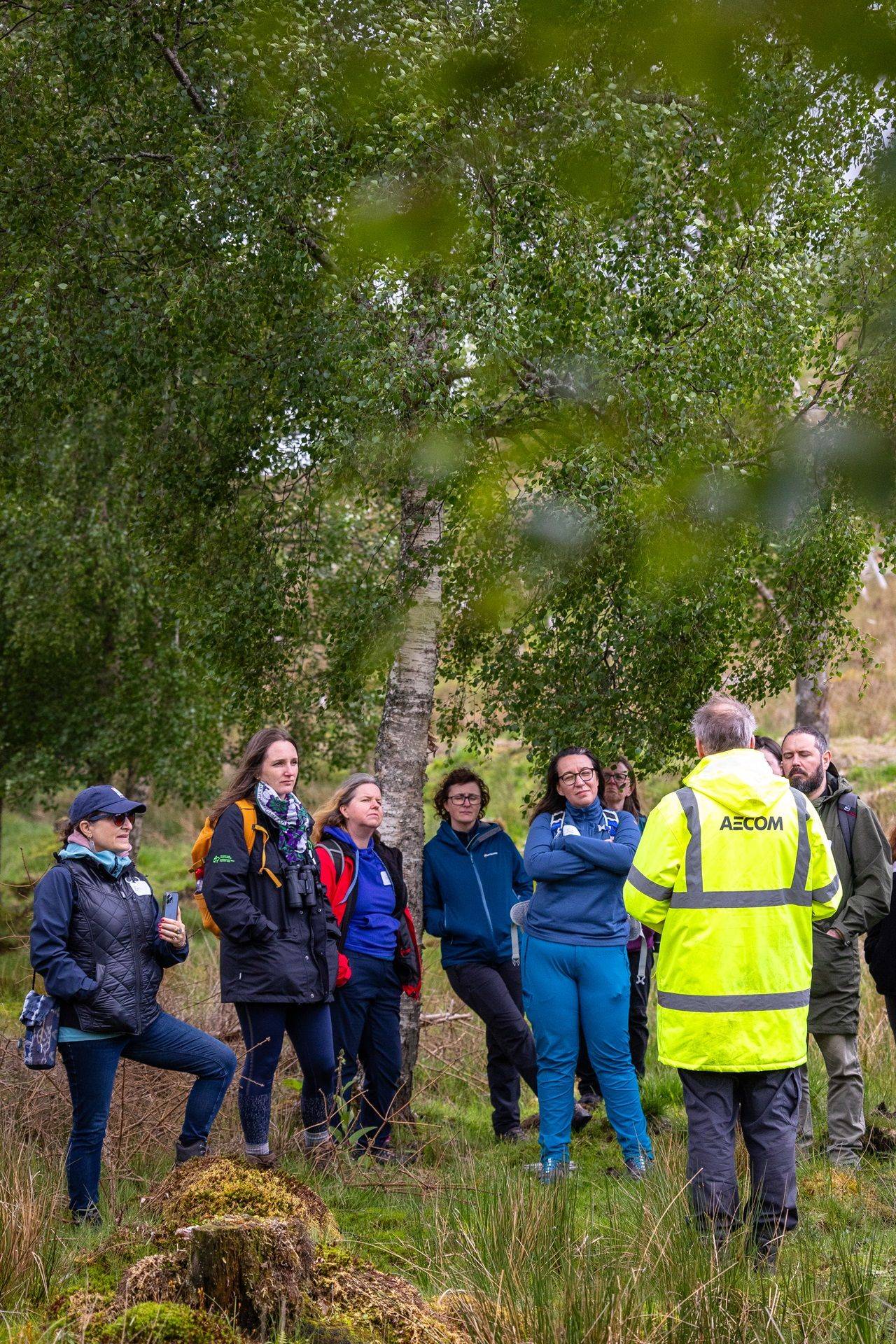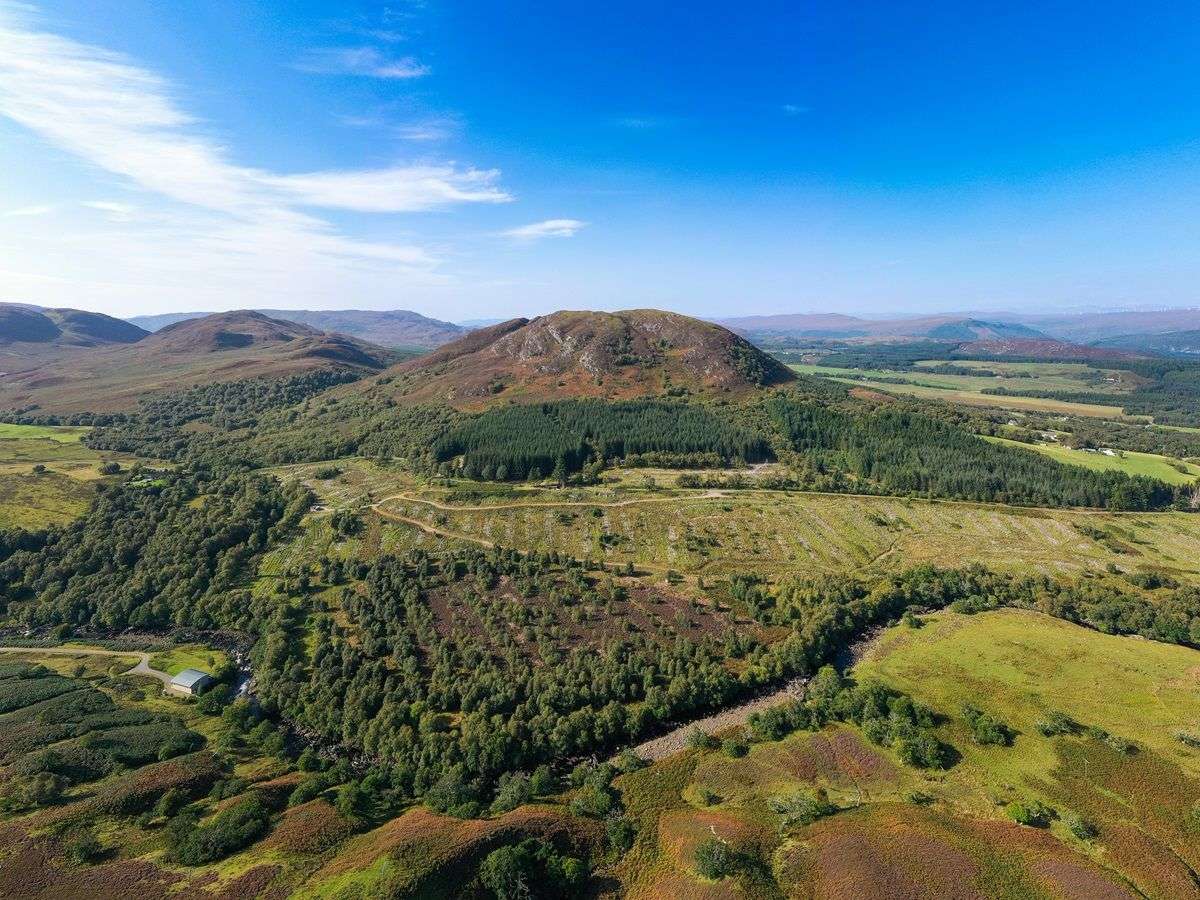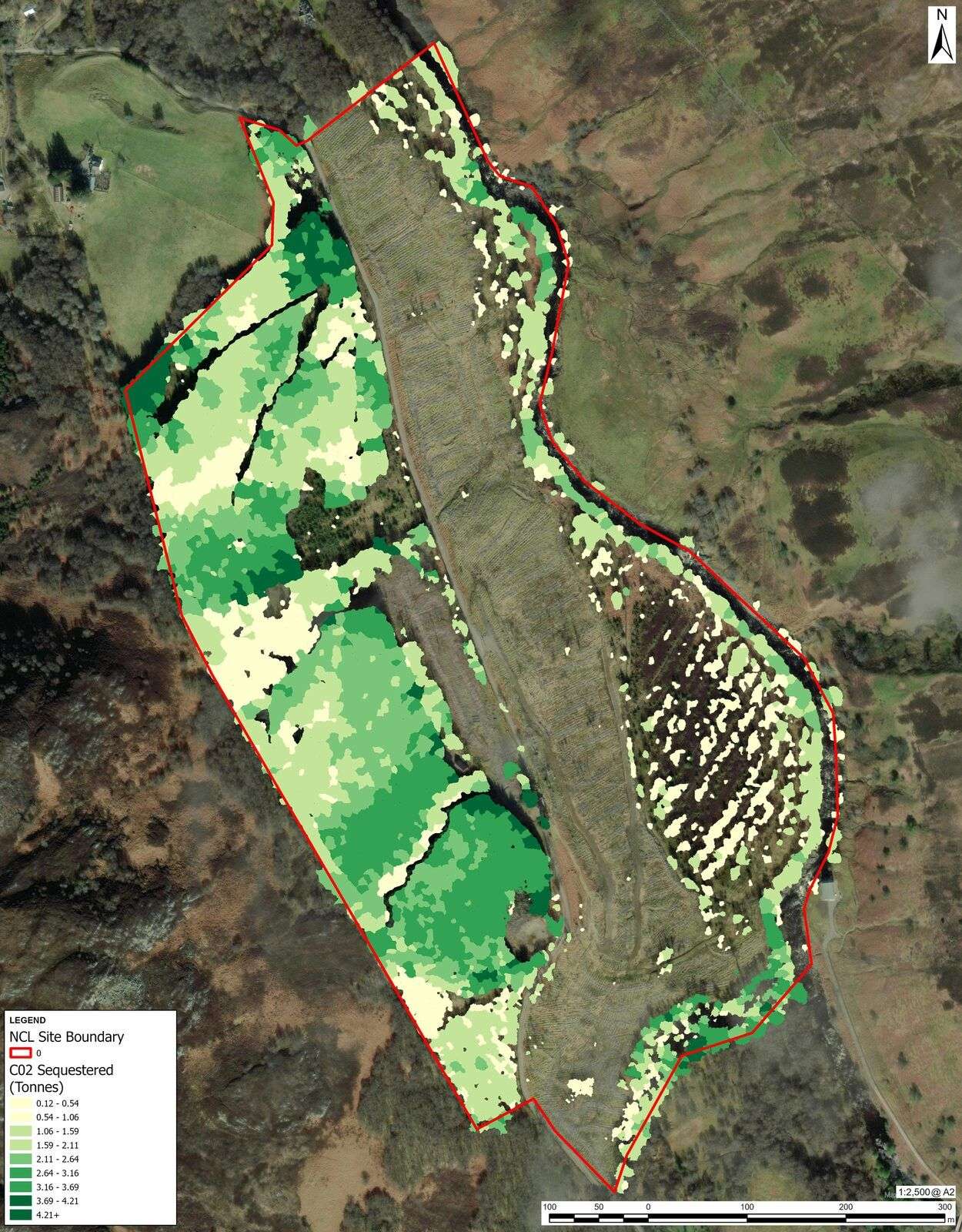
Lessons from the Natural Capital Laboratory on connecting nature and business
In this Q&A, our experts discuss how insights from the Natural Capital Laboratory are transforming our approach to advising businesses on sustainable land management and natural capital accounting.


As businesses face increasing pressure to address environmental sustainability, the need for practical, data-driven approaches to land management and natural capital accounting has never been greater. The pioneering work at the Natural Capital Laboratory—a five-year pro bono research project in the Scottish Highlands on which AECOM is a founding partner—has provided us with invaluable insights and tools which we use for the benefit of our private and public sector clients.
AECOM’s editors sat down with Nature Director Alex Brearley and Principal Consultant Milica Apostolovic to discuss how our involvement with the project has influenced the way in which we advise clients about nature recovery, land management and meeting environmental regulations.
Q: In the five years AECOM has been involved in the Natural Capital Laboratory, how has the project helped to further awareness around natural capital but also our own skillsets and practices?
Milica Apostolovic (MA): Five years ago, when AECOM first signed up to be a pro bono partner on the Natural Capital Laboratory, the concept of natural capital was not a topic that came up often in client conversations, especially outside of the UK.
But the Natural Capital Laboratory proved to be an incredibly effective instrument for starting conversations about natural capital, across different geographies. I think the uniqueness of the lab is what got people interested. It’s not your ‘business as usual’ project but something really cool and interesting.
Alex Brearley (AB): Our involvement has certainly changed how we advise clients—for the better.
The Natural Capital Laboratory is a test bed to experiment with established techniques to better understand them, identify their shortfalls and improve on them. That experience has given us a unique edge.
It means that we’re not just offering theoretical solutions—we have hands-on experience testing, refining, and implementing nature strategies.
Q: Can you explain why businesses should be aware of natural capital accounting and its benefits?
MA: The whole point of doing natural capital accounting is to influence the decision-making process by putting a quantification on something that was previously unquantifiable: i.e., those natural resources which provide essential services for human wellbeing and survival.
AB: Corporations should view natural capital accounting as an effective way to understand the true value of their land holdings, well beyond just the economic value. It ensures that the important non-financial aspects are included in a company’s decision-making process.
For example, in the United Kingdom, Southern Water Services used natural capital accounting to guide investment decisions, ensuring that funds are directed toward the most impactful projects.
MA: Natural capital accounting also helps organisations to optimise land management in a manner that is compatible with their climate and nature commitments, as well as national or global ones.
Corporations should view natural capital accounting as an effective way to understand the true value of their land holdings, well beyond just the economic value.
Q: What types of businesses stand to benefit the most from the lessons learnt at the NCL?
MA: The range of businesses that can benefit is quite broad. Landowners and land managers are obvious beneficiaries, whether in the public or private sector.
Many companies have landholdings they are not utilising to their full potential, either because they lack the knowledge to understand the full extent of its potential value against emerging carbon and biodiversity markets, or they are unsure how to capitalise on this value.
Beyond landowners, companies with supply chain dependencies on natural resources—such as those in agriculture, energy, and water management—also stand to gain. For example, companies sourcing materials from farmers may want to assess and mitigate potentially adverse impact on biodiversity.
What is the Natural Capital Laboratory?
The Natural Capital Laboratory is a unique and experimental project to monitor the impact of rewilding and restoration interventions in the remote Scottish Highlands.
The ‘living’ outdoor laboratory is located on a site called Birchfield—covering 100 acres of land just south of Loch Ness. It is a partnership between landowners Emilia and Roger Leese, environmental and infrastructure consultancy AECOM, nature restoration and rewilding charity the Lifescape Project, and the University of Cumbria.
Click here to discover more about this fascinating research project.

Q: What are the key drivers pushing businesses to adopt natural capital accounting?
AB: There are three main drivers. First, the need to report on environmental impact. This is being driven by initiatives such as the Taskforce on Climate-Related Financial Disclosures (TCFD), Taskforce on Nature-Related Financial Disclosures (TNFD) and the Corporate Sustainability Reporting Directive (CSRD).
Second, the need to show positive ESG credentials to stakeholders such as shareholders and customers. This is where companies can enhance their corporate reputation through being a ‘good neighbour’.
Third, corporates are using natural capital accounting to understand the impact of nature on their business. For example, how climate change may create supply chain risks.
Q: Can you give an example of how we have helped a company better understand the benefits that natural capital accounting can bring to their business?
MA: Absolutely, yes. A global energy company approached us with a question: what to do with a vast area of unused land which surrounds some important built assets. A lot of this land has valuable natural assets. However, these natural assets were completely unaccounted for in the portfolio spreadsheet.
In response, we conducted a natural capital baseline assessment to figure out the land’s actual value taking into account the existing ecosystem services. Using what we’ve learnt at the Natural Capital Laboratory—alongside our other tools we’ve developed such as the SMI Nature Risk Tool and EcoUplift—we suggested interventions that could increase that value, perhaps if they ever decided to take part in carbon markets, and showed how those interventions would align with their sustainability strategy.
That’s what the work at the NCL is good at demonstrating; how to monitor and measure natural capital and how it changes over time in response to restoration and rewilding interventions.
By the end of the process, our contacts at that company had changed their perceptions of the land they owned and its future economic potential—but also the ecological and climate resilience benefits that the proposed interventions could have, such as protecting against flood risk, for example.
Q: What other innovations from the Natural Capital Laboratory might businesses be interested in?
MA: Two major innovations stand out. One is the world’s first digital natural capital accounting tool, pioneered at the Natural Capital Laboratory.
Traditional accounting methods rely on static Excel spreadsheets, which can be difficult to interpret. Our approach transforms data into an interactive, visually compelling format that enhances understanding and decision-making.
One of the biggest challenges sustainability teams face is convincing senior leadership to invest in nature-based solutions. The digital natural capital accounting tool can be used to represent data in an easy-to-understand way, making it easier for decision-makers to appreciate the value of their assets and the potential benefits of interventions.
This tool is also beneficial for businesses that need to communicate sustainability metrics to investors, regulators, or internal stakeholders.
The other is new methodologies for social capital accounting, an often-overlooked area. Businesses often struggle to quantify the social value of their landholdings. By developing standardised metrics, we help companies to better understand the broader societal impact of their environmental strategies.
One of the misconceptions about ecosystem restoration is that it is prohibitively expensive. Yet our work at the Natural Capital Laboratory demonstrates that cost-effective interventions can yield significant returns.
Q: Cost is often cited as a barrier to action. How are we helping businesses make more cost-effective decisions about rewilding?
AB: One of the misconceptions about ecosystem restoration is that it is prohibitively expensive. Yet our work at the Natural Capital Laboratory demonstrates that cost-effective interventions can yield significant returns.
For example, our peatland restoration efforts have shown that relatively small investments can lead to measurable improvements in carbon sequestration and biodiversity.
This in turn can enhance land value and open opportunities to explore nature finance, such as voluntary carbon and biodiversity markets, which could, in turn, help pay for the restoration. We’ve seen this positive reinforcement cycle at work in the England where Biodiversity Net Gain requirements are kickstarting nature restoration across the country.
MA: I’d like to add to this point about cost by saying that by testing and refining various interventions at the Natural Capital Laboratory, we’ve been able to identify what works and what doesn’t—helping businesses avoid costly trial-and-error approaches on their own sites.

Q: Can we expand on the topic of carbon sequestration and the evolving carbon credit market—and how the work done at the Natural Capital laboratory relates?
MA: Sure. We have seen a lot of interest from policy makers who are interested in the impact that the rewilding interventions are having on, for example, carbon sequestration.
One innovation involved the use of remote sensing in conjunction with our own methodologies to produce a potentially more accurate assessment of the carbon sequestration of different types of trees and woodland.
AB: In terms of carbon markets, where companies can generate carbon credits through tree planting or peatland restoration, I’d say the market is solidifying. However, the scale of sales doesn’t yet justify major investment.
That said, we expect there’s a good chance that those companies buying land with a specific aim of creating carbon credits to sell will see a return on that investment in the future.
We are seeing investors looking at how they can participate in this market in the UK. Globally, there has been significant investment, though the challenge is often around maximising the credibility of the carbon credits, and therefore minimising risk of greenwashing claims.
Q: Can you explain about the emergence of voluntary biodiversity credits and how the learnings from the Natural Capital Laboratory are relevant.
AB: The voluntary biodiversity credit market is evolving, but less developed than the carbon credit market. The idea is similar, however: you restore habitats, you measure it, and then you sell that uplift as a voluntary biodiversity credit.
We are seeing a lot of interest in voluntary biodiversity credits because it's not one-dimensional like carbon, it's multidimensional. There are lots of different ways to enhance biodiversity—it’s not just the measure of one plant or one species, but the whole ecosystem.
We are seeing a lot of interest in voluntary biodiversity credits because it's not one-dimensional like carbon, it's multidimensional. There are lots of different ways to enhance biodiversity—it’s not just the measure of one plant or one species, but the whole ecosystem.
Q: Finally, what is your one key takeaway for businesses considering their own natural capital strategies?
AB: I would like businesses to know that relying on, owning, or managing land creates an opportunity to deliver a positive impact on nature, while providing financial returns, minimising risks, and being a good neighbour.
Businesses can use nature-based solutions, such as those that we have helped pioneer at the Natural Capital Laboratory, to do this.
MA: For me, I’d want companies to appreciate that it is possible to turn environmental responsibility into a competitive advantage.
In this regard, the Natural Capital Laboratory has been instrumental in showcasing the real-world benefits of sustainable land management. It has provided us with hands-on experience and practical expertise, enabling us to collaborate with and support businesses striving for both financial success and ecological sustainability.
Find out more
At AECOM, we provide a range of services to help our clients achieve nature-positive outcomes, from advisory to restoration and ecosystem valuation, all informed by decades of global expertise in environment, ecology and design.
Click here to discover more—and read about some of our nature-related work.